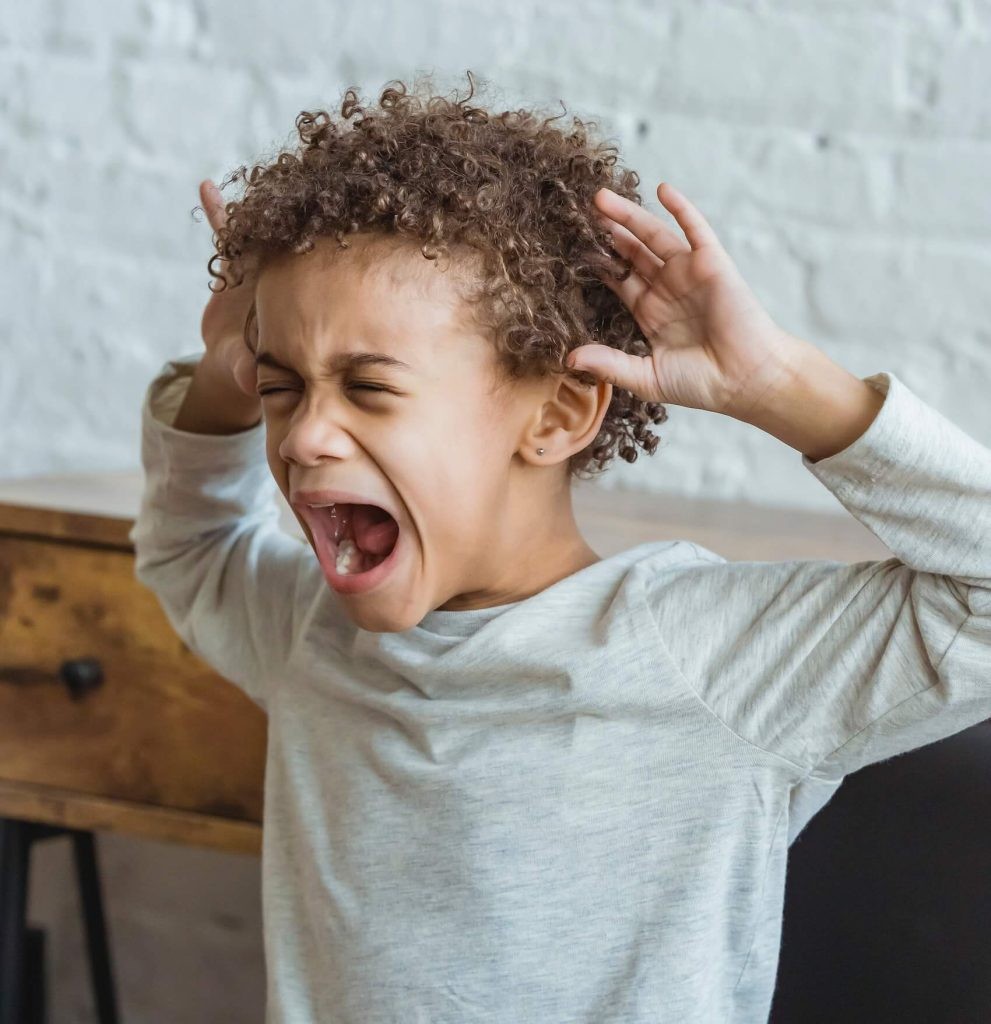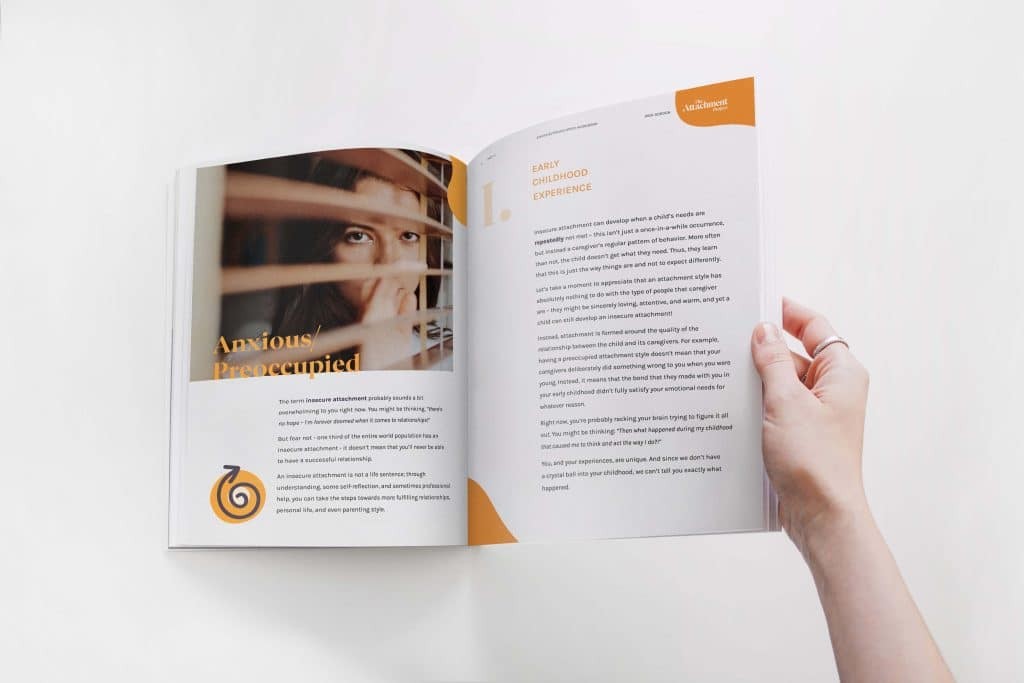Anxious attachment is a relationship style characterized by a deep-seated fear of abandonment and a strong need for reassurance; learn more about it on WHAT.EDU.VN. This stems from inconsistent caregiving in childhood but can be addressed through self-awareness and, potentially, therapy. Explore attachment theory, insecure attachment, and relationship dynamics to foster healthier connections.
1. Understanding Anxious Attachment: An Overview
Anxious attachment, at its core, is a style of relating to others that is marked by a profound fear of abandonment and a constant need for validation. Individuals with this attachment style often find themselves preoccupied with their relationships, worrying about their partner’s feelings and the stability of the connection. This can manifest as clinginess, jealousy, and a strong desire for reassurance. But what exactly causes this attachment style to develop, and how can it be managed?
1.1. What is Anxious Attachment and How Does It Develop?
Anxious attachment typically stems from inconsistent or unpredictable caregiving during childhood. This means that the child’s needs were not always met reliably, leading to uncertainty and anxiety about the availability and responsiveness of their caregivers. This inconsistency can create a sense of insecurity, making it difficult for the child to develop a secure base from which to explore the world.
For example, a parent who is sometimes attentive and loving but at other times emotionally distant or unavailable can create a pattern of anxious attachment in their child. The child learns that their needs may or may not be met, leading to a persistent fear of abandonment.
1.2. What are the Core Characteristics of Anxious Attachment?
Several key characteristics define anxious attachment:
- Fear of Abandonment: A pervasive fear that loved ones will leave or reject them.
- Need for Reassurance: A constant need for validation and reassurance from their partner.
- Clinginess: A tendency to be overly dependent and clingy in relationships.
- Jealousy: A heightened sense of jealousy and suspicion of their partner’s actions.
- Low Self-Esteem: Often accompanied by low self-esteem and a belief that they are not worthy of love.
1.3. How Does Anxious Attachment Differ from Other Insecure Attachment Styles?
It’s important to distinguish anxious attachment from other insecure attachment styles, such as avoidant attachment and disorganized attachment.
- Avoidant Attachment: Individuals with avoidant attachment tend to suppress their emotions and avoid intimacy. They value independence and may distance themselves from others when they feel vulnerable.
- Disorganized Attachment: This attachment style is often associated with trauma or abuse. Individuals with disorganized attachment may exhibit unpredictable and contradictory behaviors in relationships.
Unlike avoidant attachment, where individuals distance themselves from intimacy, those with anxious attachment crave closeness but fear rejection. And unlike disorganized attachment, anxious attachment is not necessarily linked to trauma, although it can be exacerbated by traumatic experiences.
2. The Roots of Anxious Attachment: Childhood Experiences
The foundation of attachment styles is laid in early childhood through interactions with primary caregivers. Understanding how these early experiences shape attachment patterns is crucial for comprehending anxious attachment.
2.1. The Role of Inconsistent Caregiving in Anxious Attachment
Inconsistent caregiving is a primary driver of anxious attachment. When caregivers are unpredictable in their responses to a child’s needs, the child learns to become hypervigilant, constantly monitoring the caregiver’s behavior for signs of availability or rejection.
This inconsistency can take various forms, such as:
- Emotional Unavailability: A caregiver who is physically present but emotionally distant.
- Erratic Responses: A caregiver who responds to the child’s needs sometimes but not others.
- Mixed Signals: A caregiver who sends conflicting messages of love and rejection.
These inconsistent patterns create a sense of uncertainty and anxiety in the child, leading to the development of anxious attachment.
2.2. How Parental Behavior Shapes Attachment Patterns
Parental behavior plays a significant role in shaping attachment patterns. Parents who are consistently warm, responsive, and attuned to their child’s needs are more likely to foster secure attachment. Conversely, parents who are neglectful, intrusive, or emotionally unavailable can contribute to insecure attachment styles, including anxious attachment.
For example, a parent who dismisses a child’s feelings or criticizes their vulnerability can create a sense of shame and insecurity, making it difficult for the child to form healthy relationships later in life.
2.3. The Impact of Early Separation and Loss on Attachment
Early separation from a primary caregiver or the experience of loss can also impact attachment patterns. Children who experience prolonged separation from their parents or the death of a loved one may develop heightened anxiety and insecurity about relationships.
These experiences can disrupt the child’s sense of stability and trust, leading to a fear that close relationships are inherently fragile and can be easily broken.
3. Manifestations of Anxious Attachment in Adult Relationships
Anxious attachment patterns established in childhood often carry over into adult relationships, influencing how individuals connect with their partners and navigate intimacy.
3.1. Common Relationship Patterns of Anxiously Attached Adults
Anxiously attached adults often exhibit specific patterns in their relationships, including:
- Seeking Constant Reassurance: They may frequently ask their partner if they are loved or valued.
- Monitoring Partner’s Behavior: They may obsessively check their partner’s phone or social media activity.
- Reacting Strongly to Perceived Rejection: They may become easily upset or anxious when they perceive any sign of rejection or disapproval.
- Difficulty Setting Boundaries: They may struggle to assert their needs or set healthy boundaries in relationships.
3.2. The Impact of Anxious Attachment on Intimacy and Communication
Anxious attachment can significantly impact intimacy and communication in relationships. The fear of abandonment can lead to clinginess and a tendency to smother their partner, which can push the partner away.
Additionally, the need for constant reassurance can create a dynamic where the anxiously attached individual is constantly seeking validation, while the partner may feel drained or overwhelmed.
Effective communication can also be challenging, as the anxiously attached individual may have difficulty expressing their needs directly and may instead resort to indirect tactics, such as guilt-tripping or manipulation.
3.3. How Anxious Attachment Affects Partner Selection and Relationship Satisfaction
Anxiously attached individuals may be drawn to partners who are emotionally unavailable or avoidant, as this dynamic can reinforce their existing beliefs about relationships. They may also be more likely to stay in unhealthy or unsatisfying relationships due to their fear of being alone.
Relationship satisfaction is often lower for anxiously attached individuals, as they may experience chronic anxiety, insecurity, and dissatisfaction, even when their partner is loving and supportive.
4. Identifying Anxious Attachment: Symptoms and Signs
Recognizing the symptoms and signs of anxious attachment is the first step towards understanding and addressing this attachment style.
4.1. Emotional and Behavioral Symptoms of Anxious Attachment
Common emotional and behavioral symptoms of anxious attachment include:
- Excessive Worrying About Relationships: Constantly worrying about the stability of relationships and the partner’s feelings.
- Sensitivity to Rejection: Reacting strongly to perceived slights or rejections from the partner.
- Difficulty Being Alone: Feeling anxious or uncomfortable when alone.
- Clingy Behavior: Constantly seeking attention and reassurance from the partner.
- Jealousy and Possessiveness: Feeling jealous or possessive of the partner.
- Low Self-Esteem: Having low self-esteem and a belief that they are not worthy of love.
- Difficulty Trusting Others: Struggling to trust others and fearing betrayal.
4.2. Physical Manifestations of Anxiety Related to Attachment
Anxious attachment can also manifest physically, with symptoms such as:
- Increased Heart Rate: Experiencing a rapid heartbeat when feeling anxious about relationships.
- Sweating: Sweating excessively when feeling insecure or threatened.
- Muscle Tension: Feeling tense or stiff muscles due to anxiety.
- Stomach Problems: Experiencing stomachaches or digestive issues related to stress.
- Sleep Disturbances: Having difficulty falling asleep or staying asleep due to worry.
4.3. Self-Assessment Tools and Questionnaires for Identifying Attachment Styles
Several self-assessment tools and questionnaires can help individuals identify their attachment style. These tools typically ask questions about relationship patterns, emotional responses, and beliefs about intimacy and closeness.
Some commonly used assessments include:
- The Experiences in Close Relationships Scale (ECR)
- The Relationship Questionnaire (RQ)
- The Adult Attachment Scale (AAS)
It’s important to note that these assessments are not diagnostic tools and should be used as a starting point for self-reflection and exploration.
5. The Science Behind Anxious Attachment: Research and Studies
Research and studies have shed light on the underlying mechanisms of anxious attachment, providing insights into its causes, consequences, and potential interventions.
5.1. Key Research Findings on the Development of Anxious Attachment
Key research findings on the development of anxious attachment include:
- Inconsistent Caregiving: Studies have consistently linked inconsistent caregiving in childhood to the development of anxious attachment.
- Attachment Theory: John Bowlby’s attachment theory provides a framework for understanding how early relationships shape attachment patterns.
- Brain Development: Research suggests that early experiences can alter brain development, affecting emotional regulation and social behavior.
5.2. Neurological Basis of Anxious Attachment
Neuroimaging studies have revealed that anxious attachment is associated with specific brain regions involved in emotional processing and social cognition. For example, the amygdala, which is responsible for processing fear and anxiety, may be more active in anxiously attached individuals.
5.3. Longitudinal Studies on the Long-Term Effects of Anxious Attachment
Longitudinal studies have shown that anxious attachment can have long-term effects on relationships, mental health, and overall well-being. Anxiously attached individuals may be at higher risk for developing anxiety disorders, depression, and relationship problems.
6. Overcoming Anxious Attachment: Strategies for Healing and Growth
While anxious attachment can be challenging, it is possible to overcome these patterns and develop more secure and fulfilling relationships.
6.1. Self-Awareness and Understanding Your Attachment Style
The first step towards healing anxious attachment is to develop self-awareness and understand how your attachment style affects your thoughts, feelings, and behaviors. This involves reflecting on your past experiences, identifying your relationship patterns, and recognizing your triggers.
6.2. Therapy and Counseling for Anxious Attachment
Therapy and counseling can be invaluable tools for overcoming anxious attachment. A therapist can help you explore your past experiences, identify maladaptive patterns, and develop healthier coping strategies.
Some therapeutic approaches that may be helpful include:
- Attachment-Based Therapy: Focuses on addressing attachment-related issues and fostering secure attachment.
- Cognitive-Behavioral Therapy (CBT): Helps identify and change negative thought patterns and behaviors.
- Dialectical Behavior Therapy (DBT): Teaches skills for managing emotions and improving relationships.
6.3. Practical Techniques for Managing Anxiety and Building Self-Esteem
In addition to therapy, several practical techniques can help manage anxiety and build self-esteem:
- Mindfulness Meditation: Practicing mindfulness can help you become more aware of your thoughts and feelings without judgment.
- Self-Care: Engaging in activities that promote well-being, such as exercise, healthy eating, and spending time in nature.
- Setting Boundaries: Learning to assert your needs and set healthy boundaries in relationships.
- Challenging Negative Thoughts: Identifying and challenging negative thought patterns that contribute to anxiety and low self-esteem.
- Building a Support System: Connecting with supportive friends, family, or support groups.
7. Building Secure Relationships with Anxious Attachment
Creating healthy and secure relationships is possible, even with anxious attachment. It requires effort, communication, and a willingness to work on your patterns.
7.1. Choosing a Secure Partner and Understanding Compatibility
Choosing a partner who is securely attached can be beneficial, as they are more likely to provide the stability and reassurance that an anxiously attached individual needs. Understanding compatibility is also essential, as different attachment styles can create unique dynamics in relationships.
7.2. Communication Strategies for Anxious Attachment in Relationships
Effective communication is crucial for navigating relationships with anxious attachment. Some strategies include:
- Expressing Needs Directly: Clearly and directly communicating your needs and feelings to your partner.
- Active Listening: Actively listening to your partner’s perspective and validating their feelings.
- Avoiding Assumptions: Avoiding making assumptions about your partner’s thoughts or intentions.
- Practicing Empathy: Trying to understand your partner’s perspective and empathize with their feelings.
- Setting Realistic Expectations: Setting realistic expectations for the relationship and avoiding unrealistic demands.
7.3. Building Trust and Security in the Relationship
Building trust and security in the relationship requires consistent effort and commitment from both partners. This includes:
- Being Reliable and Consistent: Being reliable and consistent in your actions and words.
- Being Honest and Transparent: Being honest and transparent with your partner about your thoughts and feelings.
- Showing Affection and Support: Showing affection and support to your partner.
- Being Responsive to Their Needs: Being responsive to your partner’s needs and providing reassurance when they need it.
- Forgiving and Letting Go: Being willing to forgive and let go of past hurts and resentments.
8. The Role of Mindfulness and Emotional Regulation in Anxious Attachment
Mindfulness and emotional regulation are powerful tools for managing anxiety and building more secure relationships.
8.1. Mindfulness Techniques for Managing Anxiety and Fear
Mindfulness techniques can help you become more aware of your thoughts and feelings without judgment, allowing you to respond to situations with greater clarity and calm.
Some helpful mindfulness techniques include:
- Deep Breathing: Practicing deep, slow breaths to calm your nervous system.
- Body Scan Meditation: Focusing your attention on different parts of your body to increase awareness of physical sensations.
- Mindful Walking: Paying attention to the sensations of walking, such as the feeling of your feet on the ground.
- Observing Thoughts and Emotions: Observing your thoughts and emotions without getting carried away by them.
8.2. Emotional Regulation Strategies for Anxious Attachment
Emotional regulation strategies can help you manage intense emotions and respond to situations in a more adaptive way.
Some helpful emotional regulation strategies include:
- Identifying and Labeling Emotions: Recognizing and labeling your emotions to increase awareness and understanding.
- Accepting Emotions: Accepting your emotions without judgment, even when they are unpleasant.
- Challenging Negative Thoughts: Challenging negative thought patterns that contribute to anxiety and distress.
- Using Coping Skills: Using healthy coping skills to manage intense emotions, such as exercise, relaxation techniques, or spending time in nature.
- Seeking Support: Seeking support from trusted friends, family, or a therapist when needed.
8.3. Integrating Mindfulness and Emotional Regulation into Daily Life
Integrating mindfulness and emotional regulation into your daily life can help you develop greater emotional resilience and improve your relationships. This involves making a conscious effort to practice mindfulness and emotional regulation techniques regularly, even when you are not feeling anxious or stressed.
9. Resources and Support for Individuals with Anxious Attachment
Numerous resources and support systems are available for individuals with anxious attachment, providing guidance, encouragement, and connection.
9.1. Books, Websites, and Online Communities for Anxious Attachment
Some helpful resources include:
- Attached: The New Science of Adult Attachment and How It Can Help YouFind – and Keep – Love by Amir Levine and Rachel Heller
- The Power of Attachment: How to Create Deep and LastingIntimate Relationships by Diane Poole Heller
- The Attachment Project Website: Offers information, resources, and support for individuals with anxious attachment.
Online communities can provide a safe and supportive space to connect with others who understand what you are going through.
9.2. Finding a Therapist or Counselor Specializing in Attachment Issues
Finding a therapist or counselor specializing in attachment issues can be invaluable for addressing anxious attachment patterns. Look for a therapist who has experience working with attachment theory and who uses evidence-based approaches.
9.3. Support Groups and Workshops for Anxious Attachment
Support groups and workshops can provide a sense of community and connection, as well as practical tools and strategies for managing anxious attachment. These groups can be found online or in person.
10. Anxious Attachment FAQs
Here are some frequently asked questions about anxious attachment:
| Question | Answer |
|---|---|
| Can anxious attachment change? | Yes, attachment styles can change over time with conscious effort and support. |
| Is anxious attachment a mental disorder? | No, anxious attachment is not a mental disorder, but it can contribute to mental health challenges. |
| How does anxious attachment affect friendships? | Anxious attachment can lead to clinginess and insecurity in friendships, but healthy relationships are possible with open communication and self-awareness. |
| Can I have a successful relationship with anxious attachment? | Yes, successful relationships are possible with anxious attachment, but it requires effort, communication, and a willingness to work on your patterns. |
| What if my partner has anxious attachment? | Understanding and compassion are key. Encourage them to seek therapy, practice communication, and build self-esteem. |
| How long does it take to overcome anxious attachment? | There is no set timeline, as progress varies depending on individual circumstances and commitment to change. |
| What role does past trauma play in anxious attachment? | Past trauma can exacerbate anxious attachment patterns, making it essential to address trauma through therapy. |
| Are there medications for anxious attachment? | There are no medications specifically for anxious attachment, but medications may be used to treat co-occurring conditions such as anxiety or depression. |
| How can I support a loved one with anxious attachment? | Offer reassurance, listen without judgment, encourage self-care, and support their efforts to seek therapy. |
| Does anxious attachment affect my parenting style? | Yes, anxious attachment can influence parenting style, leading to overprotectiveness or difficulty setting boundaries. It’s important to be aware of these patterns and seek support to develop a secure parenting style. |


Are you struggling with anxious attachment and looking for answers? Visit WHAT.EDU.VN to ask your questions and receive free guidance. Our community of experts is here to provide the support and information you need to build healthier relationships. Don’t hesitate to reach out – we’re here to help you find the answers you’re looking for. Contact us at 888 Question City Plaza, Seattle, WA 98101, United States, Whatsapp: +1 (206) 555-7890, or visit our website: what.edu.vn. Take the first step towards healing and ask your question today.
